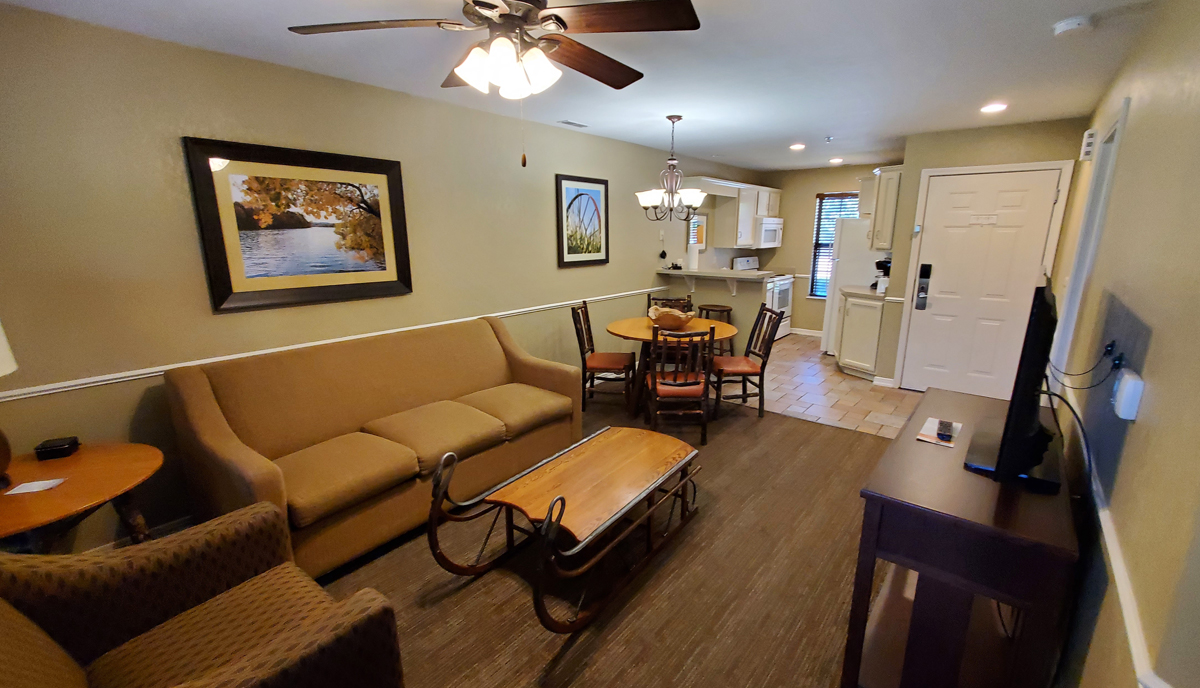(I will be giving two lectures in the White Coat Investors Physician Wellness and Financial Literacy Conference next week. To get virtual tickets click here. If you will be attending in person, please say hi. I love to meet my readers.)
I recently received the following email from one of my readers, which prompted today’s post:
Hi Dr. Fawcett,
In a recent post, I read that you don’t have any bonds in your portfolio. I’m currently working on a financial plan and investment strategy and was wondering if you would share what your portfolio consists of and why you don’t invest in bonds.
In answering this question, I want to be very clear, I am not advocating that this is the best way to invest, since everyone has a different risk tolerance level. But I do think sharing what I have invested in and seeing how my investing has changed over the years might be beneficial. I will only talk about my retirement funds as they hold 99% of my securities. So here is exactly what I did. Although it was not perfect, it still created enough funds for me to retire at age 54 when coupled with my real estate investing.
First of all I would like to address the no bonds issue. The main reason to invest in bonds is to make your portfolio less volatile. Since I have never cared about the volatility of my portfolio, I have never purchased bonds. The higher one’s bond vs stock ratio, the lower the overall average returns, and the lower the volatility. I wanted the highest return, so I went with growth mutual funds and never bothered with bonds. Again, please don’t interpret that as what you should do.
IRA Accounts
I started investing within a year of getting my first full time job, as a surgical intern. My wife and I were married in October of my internship year and we each made our first investment in the stock market in January of 1989 when we opened our IRA accounts. I was 26 years old.
Since my wife and I were newbies at investing, we went to Schwab and got an advisor who helped us open our respective IRA accounts and pick investments. At his suggestion, we maxed out the contributions for the current and previous years and each invested all the money in Templeton Growth Fund (TEPLX). Since we didn’t know anything better to do, we went with his recommendation and for the next few years that was the only mutual fund we purchased with our IRA deposits.
Turns out, the Templeton fund he recommended had the highest front-end load allowed in the business. In other words, it was the option that would maximize the broker’s profits. As I studied more, I learned about no load mutual funds and how to pick them. Then we switched to buying mutual funds of our own choosing that had no front-load fees.
Since I don’t tend to sell my mutual funds (I buy for the long haul) or rebalance (It’s all in growth stock funds anyway), today I still own those original Templeton Mutual funds. My rebalancing consisted of deciding which funds to add to my portfolio in a given year. If one was low compared to another, I bought more of the low one that year.
After I learned more about investing we split our IRA money between the following funds which we own today.
Weitz Value Fund (WVALX)
Bridgeway Aggressive Growth (BRAGX)
Schwab 1000 (SNXFX)
Janus Henderson Midcap Value (JMCVX)
Janus Henderson Growth and Income (JAGIX)
As a resident, our IRA deposits were deductible, but as an attending, with my increased income, they were not. We continued to max out our IRA deposits (beginning at $2,000 a year each and ending at $4,000 each year) until around 2006 when we stopped putting any money into our IRA accounts. The reason we stopped putting money in the IRA accounts was we could not deduct the deposit and we felt it would be more beneficial for us to pay down our 8% real estate loans with the money instead.
Paying down our real estate loans gave us a guaranteed 8% return and increased our passive income cash flow as we paid off each investment note. In a way, I guess this is similar to investing in bonds.
There was a short time in the 90s when Hillary Clinton announced she was revamping health care and so I bought some funds in the healthcare sector. Also East Germany was opening up so I bought some European sector funds. Both of those funds dropped in value and I got rid of them and stopped trying to predict the market.
Deferred Compensation Account
After I had worked as a resident for one year, June 1989, I qualified to participate in the hospital’s 457 deferred compensation retirement plan. I began to max out this retirement plan as well ($7,500 a year).
My deferred compensation plan only had about 20 options of where to invest the money. I chose to equally split my investment into two aggressive growth funds via payroll deductions from each paycheck throughout the year, thus taking advantage of dollar cost averaging.
Fidelity Contra Fund (FCNTX)
American Century Ultra Fund (TWCUX)
When I left my residency in 1993, I left the money in the deferred comp account and let it continue to grow without changing funds.
401(k) Account
In 1993 I began life as an attending and was eligible to participate in our company 401(k) and profit sharing retirement plans. This was based on a percentage of my income which I maxed out every year. I have no idea what that money was invested in over the years as it was in the hands of the person who ran the account. I just kept shoveling money into it.
When I retired from medicine in 2017, I had my money from the company 401(k) plan transferred to a rollover IRA account at TD Ameritrade (the same brokerage that was then managing the company retirement account). I chose to invest that money in the following way:
First off, I was beginning the Separate but Equal Periodic Payment Plan, also known as SEPP or 72(t), so I could take money out of my IRAs without paying any penalty before reaching age 59 ½. Under that plan I had to withdrawal a pre-calculated fixed amount of money every year for the next five years. You can read the exact details of how I did that in the prior link. I did the SEPP plan because I was not sure how much money I would need as we traveled during retirement. So this money was to be my security blanket on top of the cash flow from my real estate investments.
In order to be sure I had the cash to make the required withdrawal each year, I took my five year’s of required payments and put them into a CD ladder. After taking the first payment, I bought four CDs, each maturing in 1,2,3, and 4 years respectively. This way I did not need to annually sell mutual funds before making the distribution and I didn’t even have to see what the market was doing. A zero hassle plan.
The remaining money deposited into my rollover IRA was divided into thirds and invested equally into the following three funds:
Fidelity Index 500 (FXAIX) (Large US companies)
Vanguard Small Cap index (SWTSX) (Small US companies)
Vanguard Total International Stock Index (VTIAX) (International companies)
Later I was given another payment from my 401(k) and it was invested in:
Schwab total stock market fund (SWTSX)
I will get one more transfer in the future when the last property held in the company retirement plan sells and will invest it into the Schwab fund. (That is a long story)
I think the last purchase I made is the most indicative of how I would currently make investments, which is to buy stock index funds with low management fees, divided into large cap, small cap and international. As I have been doing all along, I am investing for growth, not for dividends or interest with my retirement accounts.
Real Estate
The bulk of the rest of my investments are held in cash flowing investment real estate, these are outside of my retirement accounts. They consist of 55 apartment rental units, which my wife and I own directly, and two commercial building which are owned in a partnership with a group of doctors. The commercial buildings are run by the officers and I have voting rights.
Currently the cash flow from my real estate investments supports my lifestyle without using any of the retirement funds. Had my crystal ball informed me of this, I don’t think I would have participated in the SEPP plan and that money would still be in my retirement accounts.
I would say that my real estate cash flow serves as a pseudo-substitute for investing in bonds. Because of this cash flow, I don’t have to sell any of my securities to live on and this reduces the effect of volatility for me. I won’t have to sell low if the market is down. I can wait to sell when the market is up.
My real estate has grown much faster than my mutual funds and now make up more than half of my net worth. My current new investment money is used to pay down my real estate debts to increase my cash flow.
Some things that are unique to me:
1: I don’t rebalance. All my securities are invested in mutual funds that I can just forget about once I make the purchase. The only rebalancing I have ever done was to choose what to buy at the time of a deposit. For example, with my later IRA deposits, I picked the investment each year based on what was already in the account and needed to be boosted. The three funds I purchased in 2017 in equal proportions are now out of balance at 40:32:28 instead of 33:33:33. That doesn’t bother me a bit. The rebalancing purist would sell some of the higher one and buy more of the lower one to even them out. This would require spending time following the funds and making the rebalance. I prefer to spend no time on my portfolio, making it as passive as possible. The buy and forget about it method. I didn’t know they were that far out of balance until I wrote this article. If you buy bonds and are trying to make them a particular portion of your portfolio, then you could either rebalance by selling and buying, or you can buy more of what is low, bonds or stocks, when you make a deposit.
2: I don’t buy bonds. My securities are invested in growth mutual funds and my real estate produces cash flow (dividends) on a monthly basis that exceeds my needs. I have never wanted to own bonds.
3: I own a high proportion of real estate. Some investors may not be comfortable with this, but it doesn’t bother me. Real estate now exceeds 50% of my assets and growing.
4: I don’t do tax loss harvesting. Since all my stock investing is in retirement accounts and losses are not deductible from there, tax loss harvesting is not an option for me. Therefore, there is no need to watch the market or put any effort into figuring out what to buy and sell to do the tax loss harvesting. Another way to avoid spending time on my portfolio.
5: I own no Roth Products. Roth accounts did not exist when I started investing and I don’t feel like putting out the effort to make decisions to sell anything off to make the conversion from traditional to Roth and pay those pesky taxes. With a large balance in traditional IRA accounts, the backdoor Roth is not an option for me. After I am finished with my SEPP withdrawals, I might consider the Roth conversions depending on my tax results, but for now I will just let it all ride.
There you have it. My minimalist way of investing. I buy something safe and stable that will grow, and then I forget about it. Thus I still own the first mutual fund I purchased back in 1989, even though I would not buy it today. I bought my real estate the same way.
I have not added any money to my retirement plans since 2013, even though I could. And I have not purchased another piece of investment real estate since 2007, even though I could. I have enough, so I don’t spend my time looking for more property to buy to make money I don’t need. Now I am taking my earnings and using it to have a good time in my retirement years and to give to others in need.
Some have argued that I should still be putting money into my retirement accounts so I can pay less in taxes on the money I earn coaching. This is true, I could do that. But I find it silly to be putting money into my retirement accounts at the same time as taking distributions from the accounts. I consider myself retired, so I am no longer saving for retirement. Any money I earn now is taxed, spent, given away, or used to pay off real estate mortgages. I don’t play the retirement savings game anymore as I have crossed the finish line. Just because I can, doesn’t mean I should.
I have no interest in spending time on my portfolio, even though I could do so and squeeze out a little higher profit. I could sell off some of those actively managed mutual funds I own, that were purchased earlier in life, and buy others with lower expense ratios. A tiny bit more profit would not make me any happier or make me spend any more money. I will stick to the no effort investment formula and use the time I saved enjoying life and hanging with my family.
To be fair, there were a few times during this journey that I bought some individual stocks. They amounted to a very, very small percentage of my investing so I didn’t bother to include them. I also purchased an ownership interest in several businesses through the years, outside of my retirement plans, and only one of them ever did better than my mutual fund investing. The rest of the time I would have been better off if I had just put the money into paying off my real estate mortgages.
Now that I have told you my story, I can go back to having fun in my RV.








